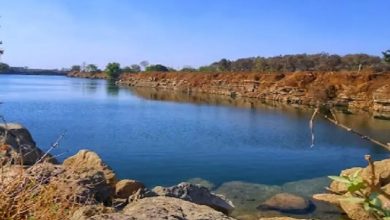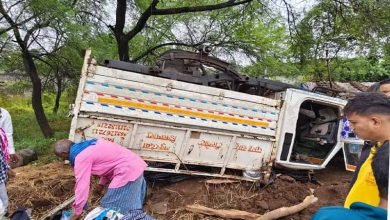The Hasdeo Forest, Adani’s Coal Mines, and the PESA Act: The Full Story of the Parsa Coal Block
The dense forests of Hasdeo in the Sarguja region of Chhattisgarh have become a battleground. On one side, tribal communities are fighting day and night to protect the forest. On the other, the government is determined to push forward with new coal mining projects. The conflict has drawn national attention, with environmentalists and activists joining the protest against the rapid deforestation.

The Story of Hasdeo Forest
Located in northern Korba and southern Sarguja and Surajpur districts, the Hasdeo Aranya is one of central India’s most ecologically rich and diverse forest areas. It serves as the catchment for the Hasdeo River and the Minimata Bango Dam, a critical water source for Chhattisgarh’s Janjgir-Champa, Korba, and Bilaspur districts. The forest also forms an essential wildlife corridor, connecting to the forests of Kanha in Madhya Pradesh and Palamau in Jharkhand, and is home to several endangered species, including elephants.
How the Exploitation Began (2010)
The exploitation of Hasdeo Aranya began in 2010 when the central government, led by Congress, gave clearance for coal mining, while the BJP government in Chhattisgarh supported the proposal. Initially, the Ministry of Environment had declared Hasdeo a “No-Go” area, prohibiting any mining activities due to its biodiversity. However, the Forest Advisory Committee (FAC) later reversed this decision, granting forest clearance for the Parsa East and Kete Basan coal blocks. Although the National Green Tribunal (NGT) canceled this approval in 2014, mining activities resumed shortly thereafter.
Warnings of Ecological Disaster
A report by the Wildlife Institute of India warned that deforestation in Hasdeo could have severe consequences, particularly in exacerbating human-elephant conflict, which would become nearly impossible to control. Despite these warnings, mining activities in the Parsa Coal Block began. The coal block was allocated to the Rajasthan government, which then contracted the mining operations to the Adani Group. This allocation was made under the Congress-led central government and the BJP-led Chhattisgarh government, sparking political controversy.
Political Promises vs. Reality
In subsequent years, Congress leader Rahul Gandhi visited Hasdeo and publicly declared his support for the local communities, vowing to protect the forest at any cost. Standing alongside him was Bhupesh Baghel, who later became the Chief Minister of Chhattisgarh. Gandhi assured the tribals that Congress would stand with them to protect their land and livelihood, emphasizing that their lives were intertwined with the forest. Despite these promises, large-scale deforestation continued under Congress rule. In September 2022, over 8,000 trees were felled for coal mining, leading to protests from the BJP, which had earlier supported the same mining projects.
Resumption of Large-Scale Deforestation
In 2023, after the BJP returned to power in Chhattisgarh, deforestation resumed on an even larger scale. Within a week of Vishnudev Sai taking office as Chief Minister, 15,307 trees were cut down over an area of 91 hectares in the Hasdeo forest. Notably, the same BJP leaders who had previously protested the deforestation remained silent after assuming power, further complicating the political dynamics surrounding the issue.
Tribal Communities Resist
Despite political flip-flopping, the local tribal communities have remained steadfast in their opposition to mining activities. Since March 2022, the Hasdeo Aranya Bachao Sangharsh Samiti, comprising local villagers, has been protesting to protect their forest, water, and land. Their protest has continued for over a year and a half, with little support from political parties.
Allegations of Fake Gram Sabhas
One of the most contentious issues surrounding the Parsa Coal Block is the allegation that the permission for mining and tree-cutting was obtained through fraudulent Gram Sabha meetings. Under the PESA (Provisions of the Panchayats (Extension to Scheduled Areas) Act), the tribal Gram Sabhas have the right to control local resources and must give their consent for such projects. However, villagers claim that fake Gram Sabha resolutions were used to bypass their rights and secure approvals for mining.
What is the PESA Act?
The PESA Act, passed in 1996, extends the Panchayati Raj system to India’s Scheduled Areas, primarily tribal regions. It gives tribal Gram Sabhas control over natural resources like land, forests, and water, ensuring that these communities have a say in decisions impacting their environment and livelihoods. The act is designed to protect the unique cultural and ecological identity of tribal areas, ensuring that development does not come at the cost of their rights.
The Coal Bearing Act: What Does it Entail?
The Coal Bearing Areas (Acquisition and Development) Act of 1957 gives the government the authority to acquire land for coal mining in areas where coal reserves are found. This act facilitates the rapid development of coal mining in public interest, often at the expense of local communities and the environment. The provisions of this act have been used to justify land acquisition in Hasdeo, despite local resistance.
The Struggle Continues :
The fight for Hasdeo’s forests is far from over. Tribal communities, backed by environmental activists, are determined to protect their ancestral lands. However, the government’s focus on coal mining for economic development, coupled with corporate interests, has made the conflict increasingly complex. The Hasdeo story is a reflection of the ongoing struggle in India to balance development, environmental protection, and the rights of indigenous communities.




